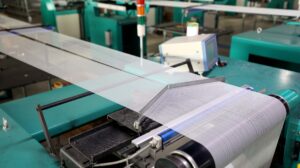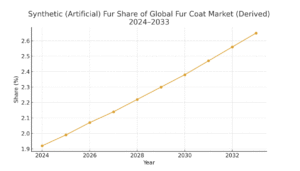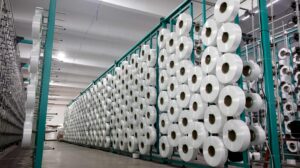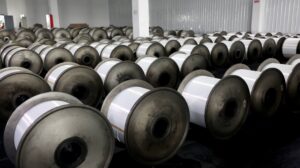Faux fur fabric is a soft, delicate fabric with increasingly realistic visual volume and formability, suitable for a wide range of clothing styles. It offers a more cost-effective alternative to real fur, while still providing a sense of luxury. Market demand has been growing in recent years.
What is faux fur fabric?
Faux fur fabric is a natural blend fabric that mimics the look and feel of real animal fur. It’s delicate, soft, and provides excellent warmth. With growing environmental awareness, affordable faux fur is gradually entering the market.
Today’s faux fur fabrics are used for a more realistic appearance and can be blended into a variety of colors and patterns through weaving and dyeing techniques. Consequently, they’ve become popular among consumers.
If you want to buy faux fur fabric come to X-Texture for consultation.

Introduction to Faux Fur Fabric Materials
Faux fur fabric is primarily composed of the following materials:
Polyester
The most common base material, featuring high strength, excellent abrasion resistance, and easy dyeing, making it suitable for large-scale production.
Acrylic
Produces a superior fur-like feel, similar to natural fur, and boasts a fluffy, soft texture.
Nylon
Commonly used to improve strength and durability, some products incorporate nylon fibers for enhanced toughness.
Polypropylene
Being inexpensive, it’s often used for low-cost, mass-produced faux fur.
Blended Materials
To balance feel, durability, and appearance, modern faux fur fabrics typically utilize a composite process combining acrylic, polyester, and nylon.
In addition, the base fabric is typically made of cotton, polyester, or knitted fabric to ensure the durability and stretchability of the pile.
Faux Fur Fabric Market Share Analysis

The global faux fur market has continued to grow in recent years. According to industry data:
Market Size: The global faux fur market will exceed US$3.5 billion in 2023 and is expected to maintain a compound annual growth rate of 6%-8% over the next five years.
Application Share: Fashion apparel accounts for over 45% of the market share; home furnishings (blankets, pillows, carpets) account for approximately 30%; and automotive interiors and accessories account for approximately 15%.
Regional Distribution: Europe and North America are the primary consumers of faux fur due to strict environmental and animal protection regulations; the Asia-Pacific market is experiencing rapid growth, particularly for clothing and home fur brands in China, South Korea, and Japan.
Why choose faux fur fabric?
Ethical and Environmental Reasons: Avoiding animal hunting aligns with the sustainable development philosophy of modern society.
High Cost-Effectiveness: Prices are significantly lower than natural fur, yet the differences in appearance and feel are becoming increasingly smaller.
High Design Freedom: Colors and patterns can be freely customized, regardless of the type of animal fur.
Easy Maintenance: More wear-resistant than natural fur, and less susceptible to insect damage and mold.
What are the advantages of faux fur fabric?
Realistic Appearance: Highly realistic craftsmanship accurately reproduces the luster and feel of real fur.
Lightweight and Comfortable: Compared to natural fur, faux fur is lighter and offers a better wearing experience.
High Durability: Less likely to shed, with excellent fiber stability.
Manageable Cost: Suitable for large-scale commercial applications.
Variety: Able to meet the rapidly changing demands of fashion trends.
What is the texture of faux fur fabric?
Modern faux fur feels almost as good as natural fur, soft and smooth. In some high-end products, it’s even difficult to tell the difference between the real thing and the fake. Different processes and materials determine the different textures:
Acrylic blends → Fluffy and warm.
High-density polyester → Lustrous and firm.
Long-hair technique → Luxurious appearance, often used in coats or blankets.

How environmentally friendly is faux fur fabric?
While faux fur fabric offers significant advantages in animal welfare, its environmental impact is not without its drawbacks:
Positives: It avoids the ecological damage caused by animal farming and the fur industry; it is reusable, and some materials are recyclable.
Challenges: Some faux furs are based on petrochemical fibers, which have a long decomposition cycle and a limited recycling system.
To address this, the industry is promoting the use of recycled polyester (rPET) and bio-based fibers to further enhance their environmental value.
Is faux fur fabric easy to clean?
Compared to natural fur, faux fur offers several cleaning advantages:
Machine washable (partially): Short-haired faux fur can be washed in cold water.
Resists deformation: The fiber is highly stable and doesn’t shrink or become stiff after washing.
Resists fading: The dye is highly durable and retains its vibrant color even after washing.
However, please note that long-haired or high-end faux fur is recommended to be hand-washed or professionally dry-cleaned to maintain its optimal quality.
How to clean faux fur fabric?
Light cleaning: Gently comb out dust with a soft brush or wipe the surface with a damp towel.
Machine wash: Select the cold water cycle;
Detergent:Use a neutral detergent;
Laundry bag:Place in a laundry bag to avoid stretching.
Hand wash: Gently soak in cold water, avoiding excessive rubbing, and air dry.
Dry cleaning: High-end faux fur or large household items should be taken to a dry cleaner.

How to care for faux fur fabric?
Avoid high temperatures: Avoid direct sunlight or high temperatures to prevent the fibers from melting.
Prevent flattening: Store in a hanging position to avoid prolonged pressure.
Comb regularly: Use a dedicated brush to keep the fur smooth and pliable.
Avoid chemical contact: Keep away from bleach and strong acidic or alkaline detergents.
Store properly: When not in use, store in a breathable bag to avoid moisture.
Conclusion
Faux fur fabric combines fashion, aesthetics, and environmental friendliness. It not only adds beauty and luxury to clothing and home decor, but also attracts numerous consumers with its affordable price and sustainable environmental credentials.
From material research and development to environmental trends, from cleaning and maintenance to practical applications, faux fur fabric will continue to grow steadily in the fashion and home decor industries. For consumers who prioritize fashion, environmental friendliness, and practicality, faux fur is an ideal choice.



